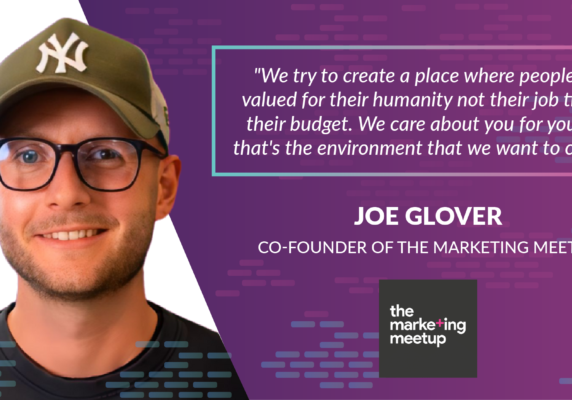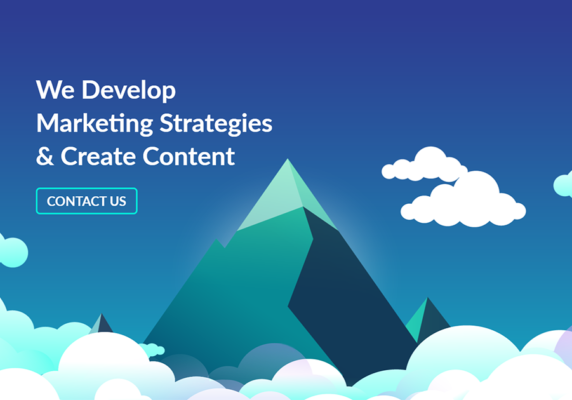How to create harmony between Sales and Marketing Teams?
We welcome Tom Mallens to our B2B Experts Corner. Tom is a sales expert and Training Director at Sandler Training UK; specialising in Management and Leadership development.
We discuss the importance of having an open dialogue between both Marketing and Sales teams to achieve the best outcomes; both for creating high quality lead generation content and improving sales results for B2B companies.
Thanks for joining us Tom.

1) What are the benefits of aligning both Marketing and Sales objectives from a company’s perspective?
Forget the advantages for a moment, I think business owners need to focus not just on the benefits but on the direct and measurable disadvantages and costs of not aligning those two departments. In so many companies, sales and marketing don’t communicate with each other let alone talk on a regular basis.
It creates HUGE amounts of wasted time, effort and energy for both groups and without doubt costs companies significant sums of money through poor customer experience and significantly reduced up-sell and cross-sell opportunities.
It’s quite often the case that neither department knows, understands or cares what the other is doing. In too many companies, both departments regard each other with suspicion.
When the two departments are aligned, everyone wins. Sales gives marketing invaluable information that ultimately improves service, satisfaction and customer retention, and marketing gives salespeople clear opportunities to get in front of the right people.
2) For agencies and suppliers, the first point of contact is traditionally a Marketing Manager. How important is it to have a relationship with the Sales team as well?
It’s certainly extremely helpful. I’d advise anyone working with a company to always be expanding their number of contacts within a department but also the range of contacts outside of that in other parts of the business.
Having just one contact in one department leaves you extremely vulnerable when something changes or someone, inevitably, transfers to another department or company.
3) What questions should we be asking a Sales Manager to get the important insights we need?
It’s an unfortunate reality that in many companies, marketers simply don’t talk to end-users the way that salespeople do. Salespeople usually lack a big-picture understanding of their marketplace and industry the way good marketers have but they typically have a lot of insight into the practical issues and emotions faced by existing and potential customers on a day-to-day basis. A few questions that might be worth asking include:
- What are the most common pain points that prompt your customers to buy?
- What are they typically hoping your product/service will do for them?
- What feelings and emotions drive their purchases? What pains or problems are they trying to avoid and what gains or benefits are they hoping to experience?
4) In your experience, what types of creative content are the most effective for generating leads?
Nowadays, it’s all about two things. Attention and understanding. First of all, you’ve got to have something that stands out from the ocean of other content out there and gets you the attention of the right people for the right reasons.
Second of all, you’ve got to show you understand them and their world. Whether you use facts and information or humour and emotions, you must demonstrate a connection to and understanding of your ideal customers.
Videos on Linkedin are a fantastic (and greatly under-used) way to do this. They’re one of the best ways to build familiarity with potential customers and really help speed up the rapport-building process.
Personally, I’ve found creating a short text-based post that either duplicates or complements what’s said in the video really boots effectiveness too. Not everyone wants to watch the whole video so the text gives them a quick alternative to still get the essence of what you’re saying.
5) For B2B companies, what emphasis do you put on LinkedIn for generating sales?
Linkedin is still tremendously under-utilised resource for most B2B companies, both on the sales and marketing side.
Standard Linkedin company pages are not great for attracting leads. With rare exceptions, they offer extremely limited reach and aren’t good for building a feeling of connection with existing or potential customers.
However, companies feel they have much more control of their message when they post on company pages than they do if they encourage individuals to post on their personal Linkedin profiles.
As a result, they tend to stick to safe and bland company content event though people are not likely to notice or want to engage with.
Linkedin can work brilliantly for both sales and marketing departments when companies treat it like the ‘social’ media platform it is and give themselves and their people a freer reign to socialise online.
That means posting, commenting and interacting regularly on topics that don’t necessarily have a direct link to what they do or sell.
People aren’t on Linkedin because they want to get information. Most people are on there because they want something interesting or entertaining while glancing at their phone.
The marketers and salespeople that do that are the ones that get the most visibility, interaction, awareness and opportunities to take conversations offline – which is still where the bulk of B2B business is done.
6) What new trends have you seen that could change the way that we approach sales?
There’s always a new trend on the horizon but, for all our technology, human nature hasn’t changed. I think it’s important salespeople are clear on what hasn’t and won’t change when it comes to sales.
People want to feel listened to, understood and guided by a safe pair of hands towards the best purchasing decision for them. For the time being at least, technology can’t give people those feelings!
That being said, it’s clear that potential customers are often getting in contact with salespeople much later in their buying journey.
Salespeople need to be conscious of when that’s the case and simply let the new potential customer buy without getting overly-involved.
I’ve seen two recent real-life examples of retail salespeople talk themselves out of a sale because they tried too hard to persuade someone who’d already decided they wanted to make a purchase.
Because they didn’t shut up and kept trying to pitch them, the potential customer got annoyed and simply left.
7) What skills should B2B company managers improve upon to ensure their sales process is as effective as possible?
The best skill for a company owner designing a sales process is the ability to keep things simple! It’s very easy and appealing to over-complicate business processes and it rarely helps.
If a sales process is over-complicated, salespeople simply won’t stick to it!
Some great insights here, thanks Tom! If you are looking to improve your sales processes or sign-up to one of his training programs, contact Tom directly or connect with him on LinkedIn.
Tom Mallens, Sandler Training UK
tom.mallens@sandler.com
Connect with Tom:
https://www.linkedin.com/in/tommallens/



